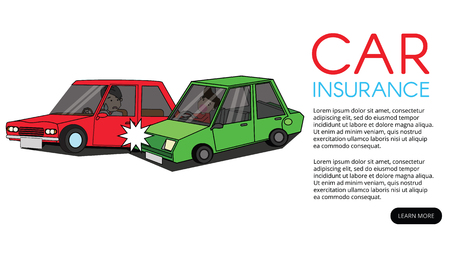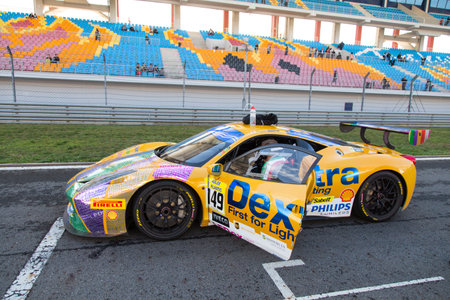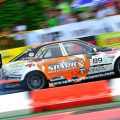Setting the Scene: The Roots of Touring Car Racing in Britain
Long before the British Touring Car Championship (BTCC) cemented itself as a national treasure, the seeds of touring car racing were sown amidst the rolling countryside and storied tarmac of Britain’s classic circuits. The years following World War II marked a period of great change for motorsport in the UK, with a renewed appetite for speed, excitement, and innovation. As ex-military airfields like Silverstone and Goodwood were repurposed into racing venues, a new breed of competition emerged—one that brought everyday saloon cars onto the grid, pitting them against each other in fierce but relatable battles.
The early post-war scene was defined by ingenuity and accessibility. Unlike single-seater Grand Prix machines, these “tin-top” racers were based on vehicles seen daily on British roads: Morris Minors, Austin A40s, Ford Zephyrs, and more. Local garages and amateur drivers alike could prepare their own cars and take to the track, blurring the lines between professional and enthusiast. This grassroots approach resonated deeply with spectators who recognised their own family cars jostling for position on legendary circuits.
Classic Circuits that Shaped Touring Car Racing
| Circuit Name | Location | Year Established | Notable Early Events |
|---|---|---|---|
| Silverstone | Northamptonshire | 1948 | First used for touring car events in late 1940s; host of RAC Tourist Trophy |
| Goodwood Circuit | West Sussex | 1948 | Popular venue for saloon car races in the 1950s and 60s |
| Brands Hatch | Kent | 1950 (permanent) | Became home to key touring car battles from mid-century onwards |
| Oulton Park | 1953 | A staple of northern club racing scenes, including touring cars |
The Spirit of Post-War Motorsport Innovation
This period was about more than just competition; it was about community, resourcefulness, and the thrill of being part of something new. With limited resources but boundless enthusiasm, Britain’s motoring public embraced this fledgling sport. In many ways, these humble beginnings laid the foundations for what would become one of the UK’s most beloved motorsport traditions—a championship where characterful cars and larger-than-life personalities would soon capture the imagination of an entire nation.
2. The Birth of the BTCC: From Saloon Cars to a National Series
The story of the British Touring Car Championship (BTCC) starts with humble beginnings on post-war British roads, where everyday saloon cars began taking centre stage at local racing circuits. In 1958, this grassroots passion officially transformed into the British Saloon Car Championship, marking the start of an era that would become woven into the fabric of UK motorsport culture. The early days were marked by a diverse grid, with family favourites and high street heroes lining up side by side, creating a spectacle that was as relatable as it was thrilling.
Early Format & Racing Classes
The original championship format was class-based, ensuring competition remained fair and exciting across a wide range of car sizes and engine capacities. Here’s a look at how the classes were structured in those formative years:
| Class | Engine Capacity | Notable Models |
|---|---|---|
| A | Up to 1000cc | Austin A35, Morris Minor |
| B | 1001cc – 1600cc | Ford Anglia, Mini Cooper |
| C | 1601cc – 2700cc | Ford Cortina GT, Riley 1.5 |
| D | Over 2700cc | Jaguar Mk1, Ford Zephyr |
Iconic Cars That Defined an Era
The championship quickly became a proving ground for iconic models that now define classic British motoring. The mighty Jaguar Mk1 roared to victory in the inaugural season, its blend of style and power setting a benchmark for future contenders. Meanwhile, the plucky Mini Cooper would soon steal hearts and headlines alike with its nimble handling and underdog spirit—a true David amongst Goliaths on circuits from Brands Hatch to Oulton Park.
Evolving Into the BTCC
As British society modernised through the 1960s and beyond, so too did its beloved championship. New manufacturers joined the grid, formats evolved, but the core spirit—close racing with cars you’d spot on your local high street—remained unchanged. This accessibility and connection to everyday life is what set the BTCC apart, helping it grow from a national curiosity into a cherished British institution that continues to capture imaginations both trackside and on telly every season.

3. Golden Eras and Household Heroes
The British Touring Car Championship has had its fair share of golden eras, cementing its status as a staple of British motorsport culture. The late 1980s and 1990s are often remembered with particular fondness, an era when the BTCC’s grid was packed with factory-backed teams and legendary drivers who would become household names. Brands like Ford, Vauxhall, BMW, and Honda battled it out on classic British circuits from Brands Hatch to Oulton Park, delivering edge-of-your-seat action that made Sunday afternoons a must-watch for fans across the UK.
Star Drivers and Their Legacy
| Driver | Era | Team(s) | Achievements |
|---|---|---|---|
| Andy Rouse | 1970s–1990s | Ford, Rover | 4-time Champion, technical innovator |
| John Cleland | 1989–1999 | Vauxhall | 2-time Champion, fan favourite |
| Alain Menu | 1992–2000s | Renault, Ford | 2-time Champion, fierce rivalries with Rydell & Biela |
| Jason Plato | 1997–present | Renault, SEAT, MG, Chevrolet | Most race wins in BTCC history, TV personality |
| Murray Walker (Commentator) | 1960s–2000s | N/A | Brought races into living rooms with iconic commentary style |
Legendary Rivalries and Unforgettable Moments
No true tale of the BTCC is complete without mentioning its legendary rivalries—moments like the fierce battles between Alain Menu and Rickard Rydell or John Cleland’s infamous clash with Steve Soper at Silverstone in 1992 have gone down in British sporting folklore. These duels brought drama both on and off the track, often debated over a pint at the local pub or around a smoky campsite after a day at the circuit.
Cultural Impact: From Race Track to Living Room Sofa
The BTCC wasn’t just for petrolheads; it became mainstream entertainment. The roar of engines echoed through TV sets on ITV and BBC, while autograph-hunting kids grew up idolising their racing heroes. Iconic liveries like the green-and-yellow Volvo estate or the flame-spitting Sierra Cosworth became symbols of an era. Merchandise, model cars, and even casual pub quizzes started featuring BTCC trivia, proving how deeply ingrained the series was in everyday British life.
The Heartbeat of British Motorsport Culture
This golden period saw the BTCC morph from a weekend sideshow into a genuine pop-culture institution—fuelled by unforgettable personalities, nail-biting finishes, and that unmistakable sense of community you find nowhere else but at a British race meeting or on a cross-country road trip in your trusty campervan.
4. Innovation, Grit, and British Engineering
If there’s one thing that truly sets the BTCC apart on the world stage, it’s the unyielding spirit of innovation coupled with classic British engineering know-how. From the early days, homegrown manufacturers like Ford, Vauxhall, and MG have been locked in fierce competition, pushing the boundaries of what’s possible on four wheels. The championship quickly became a proving ground for technical advances—turbocharged engines, clever suspension tweaks, and increasingly sophisticated aerodynamics all made their mark here first.
British Brands Leading the Charge
| Manufacturer | Iconic Models | Key Innovations |
|---|---|---|
| Ford | Sierra RS500, Focus ST | Turbocharging, advanced electronics |
| Vauxhall | Astra, Cavalier | Front-wheel drive dominance, lightweight chassis |
| MG | ZT, 6 GT | Chassis balance, suspension tuning |
| Nissan (UK-built) | Primera | Touring car-specific engine mapping |
The DNA of Door-to-Door Racing
The BTCC isn’t just about tech wizardry—it’s also famous for its gritty racing style. Unlike some other championships where cars rarely trade paint, here it’s practically a Sunday tradition. Drivers and teams are renowned for their resilience and resourcefulness; pit crews can perform miracles between races under the awnings of makeshift paddocks that would make any camper proud. It’s this blend of relentless innovation and working-class determination that has made the BTCC a true British institution.
Engineering Milestones Through the Decades
| Era | Technical Leap Forward | Cultural Impact |
|---|---|---|
| 1960s-70s | Rear-wheel to front-wheel drive transition | Brought new brands and closer racing to fans up and down the country |
| 1980s-90s | Aerodynamics and turbocharged powerplants introduced | Sparked rivalries and packed grandstands from Thruxton to Knockhill |
| 2000s-present | Hybrid systems, advanced data analysis | Pushed sustainability while keeping wheel-to-wheel action alive |
A True Testament to British Grit & Ingenuity
The BTCC remains a living celebration of Britain’s mechanical mastery and fighting spirit—a showcase not just of speed but of teamwork, innovation, and proper nose-to-tail racing. Whether you’re watching from a rain-soaked trackside tent or following along at home with a cuppa, these elements have carved out a uniquely British motorsport legacy.
5. Culture, Community, and the Diehard Following
There’s something uniquely British about packing up the car, loading the tent, and heading off to a BTCC weekend. Over the decades, these race weekends have become more than just motorsport—they’re woven into the fabric of family life and community spirit across the UK. From early morning bacon butties shared around a portable stove to late-night banter under awnings in the paddock, BTCC race meets offer an authentic slice of British camaraderie.
Campsite Camaraderie & Paddock Life
The heart of any BTCC event isn’t just the track; it’s also found in the bustling campsites surrounding it. Here, seasoned fans swap stories of classic races over cups of tea, while newcomers are welcomed into the fold with open arms (and sometimes a spare chair). The paddock transforms into a living village each race weekend, blending competitive energy with an unmistakable sense of belonging.
Family Traditions & Local Dealer Involvement
For many, attending BTCC isn’t simply about watching fast cars—it’s a rite of passage. Generations gather trackside, often dressed head-to-toe in their favourite team’s kit, creating lasting memories. Local car dealers join the festivities too, running pop-up displays and offering test drives that make motoring accessible and fun for all ages.
BTCC Race Weekend: British Family Experience
| Activity | Typical Scene |
|---|---|
| Campsite Breakfasts | Bacon sarnies sizzling on portable grills |
| Paddock Walkabouts | Kids collecting autographs and selfies with drivers |
| Dealer Displays | Local garages showing off new models & offering giveaways |
| Evening Socials | Pints and laughter under gazebos as the sun sets |
Iconic Memorabilia & British Pride
No BTCC experience is complete without picking up a bit of memorabilia—be it a signed programme from Thruxton or a retro team cap from Brands Hatch. These cherished keepsakes become part of British home décor, sparking conversations long after race day has passed. For many fans, their collection tells a personal story of summers spent trackside and friendships forged over shared passion.
Ultimately, the BTCC is much more than rubber on tarmac; it’s where British culture meets motorsport heritage. Each race weekend is a celebration—a coming together of families, friends, and diehard enthusiasts who keep this racing tradition alive year after year.
6. BTCC Today: Modern Challenges and the Road Ahead
The British Touring Car Championship (BTCC) remains one of the UKs most cherished motorsport series, firmly rooted in British culture and still drawing thousands of fans to iconic circuits each season. But as with any long-standing institution, the BTCC faces a unique set of modern challenges while striving to keep its place at the heart of British motorsport.
On-Track Action: Still a Crowd-Pleaser
If you fancy your racing gritty and unpredictable, BTCC continues to deliver. Door-to-door action, frequent overtakes, and a grid packed with both seasoned veterans and rising stars ensure every race weekend is an event. The reverse-grid format and success ballast system keep things spicy, levelling the playing field and making sure there are no runaway leaders – it’s still very much anyone’s game on Sunday afternoon.
Recent Shifts in Car Technology & Regulation
The series has never been afraid of embracing innovation to stay relevant. Over the past decade, BTCC has introduced hybrid technology into its Next Generation Touring Car (NGTC) regulations, marking a significant shift towards sustainability without sacrificing spectacle. Here’s a quick look at some recent technical changes:
| Year | Key Technical Change | Impact on Racing |
|---|---|---|
| 2011 | NGTC regulations launched | Reduced costs, increased manufacturer interest |
| 2022 | Hybrid power units introduced | Boosted performance, greener credentials |
| Ongoing | Sustainable fuels & further electrification discussions | Aiming for lower emissions, future-proofing series |
Fan Engagement in the Digital Age
The BTCC has also adapted off-track by ramping up digital engagement. From live streaming on ITV Hub to behind-the-scenes content on social media, fans can get closer to the action than ever before – whether you’re watching from your campervan at Brands Hatch or tuning in from your living room in Leeds.
The Road Ahead: Evolving While Honouring Tradition
The challenge for BTCC is to balance innovation with its grassroots appeal. As environmental pressures mount and younger audiences demand ever more immersive experiences, expect further pushes into sustainable tech and enhanced fan interaction. Yet, the championship’s DNA – accessibility, competitive racing, and a uniquely British atmosphere – remains unchanged. Whether it’s the smell of burning rubber at Silverstone or a thermos of tea trackside at Knockhill, BTCC is woven into Britain’s motoring tapestry – and looks set to stay there for years to come.


